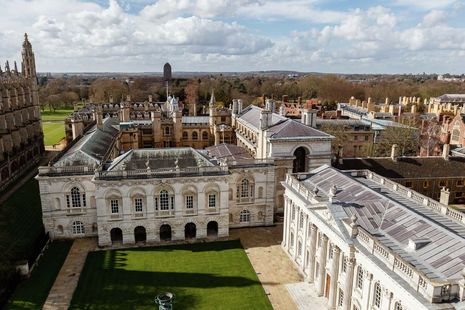Cambridge faces drop in state school admissions
State school admissions have dropped for the first time in a decade, following the announcement to scrap state school targets earlier this year

The proportion of state school students admitted to the University of Cambridge has decreased this year for the first time in a decade.
The University’s admissions statistics for 2023 reveal that 72.6% of successful UK applicants were from state schools, a slight drop from 72.9% the previous year. This means 1,895 state-educated pupils joined Cambridge this academic year. This marks the first decline in the proportion of state school admissions in a decade.
Conversely, the percentage of privately educated students increased, rising from 27.1% in 2022/23 to 27.3% this year. This resulted in 716 private-educated students matriculating in 2023.
According to the Independent Schools Council’s 2023 census, approximately 5.9% of UK students are privately educated.
This comes as Cambridge recently announced plans to eliminate state school admissions targets in its latest access plan, as revealed by Varsity.
In an online open meeting on March 4th, Cambridge University representatives stated that “there’s no proposal to have a formal target against school type” for its upcoming Access and Participation Plan (APP).
Previously, the University’s 2020-2025 access plan mandated that state school-educated students should constitute 69.1% of the cohort by 2024-2025.
These changes also follow accusations that the University was discriminating against private school pupils, given the decline in offer rates at top independent institutions. Professor James Tooley, vice-chancellor of the University of Buckingham, claimed that Cambridge University is actively trying to reduce the number of “wealthier white males.”
This year’s data also shows that over 30% of acceptances were from Greater London, with the South of England (including London, South East, and South West) accounting for just over 58% of acceptances.
Cambridge vice-chancellor Deborah Prentice had previously encouraged students from the North West to apply to Cambridge, admitting concern that admissions were “skewed” towards London and south-east England.
Just 6.8% of those admitted to Cambridge in the 2023 cycle came from the North West, a drop from 7.3% in 2022.
A University spokesperson told Varsity: “Cambridge works hard to attract applications from areas of the country that don’t traditionally send many students to leading universities.” This initiative “will continue through the various outreach projects it, and the Colleges, operate,” they said.
The number of students admitted from neighbourhoods with the lowest participation rates in higher education (POLAR4) has also decreased this year. This fell from 5.2% last academic year to only 4.9% of students in this cycle, while over 53.1% came from areas with the highest participation in post-18 study.
This metric, which classifies UK postcode areas by the participation of young people in higher education, is set to be removed from Cambridge’s future access plans.
Grammar school pupils had the highest success rate among school types, with over 28% of applicants securing a place. Lucy Cavendish admitted a significant 93.7% of state school students, while Trinity had the lowest proportion, with just over half from state schools.
A spokesperson for the University said: “Any reading of our annual admissions statistics should be done by making appropriate comparisons.”
“The last few years have been exceptional in view of A-level grading patterns. If you look back to pre-pandemic years and, in particular, the 2019 cycle, then we continue to make progress on a range of widening participation measures,” they said.
 Comment / Cambridge students are too opinionated 21 April 2025
Comment / Cambridge students are too opinionated 21 April 2025 Comment / Does the AI revolution render coursework obsolete?23 April 2025
Comment / Does the AI revolution render coursework obsolete?23 April 2025 Comment / Cambridge’s tourism risks commodifying students18 April 2025
Comment / Cambridge’s tourism risks commodifying students18 April 2025 News / News in brief: campaigning and drinking20 April 2025
News / News in brief: campaigning and drinking20 April 2025 Interviews / Meet the Chaplain who’s working to make Cambridge a university of sanctuary for refugees20 April 2025
Interviews / Meet the Chaplain who’s working to make Cambridge a university of sanctuary for refugees20 April 2025





